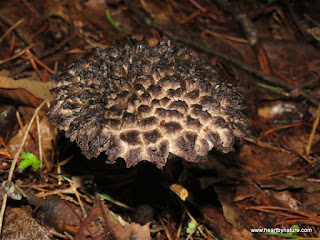In northern Ohio...Magee Marsh to be exact...birders were still getting good sightings as migrants tank up on caterpillars and insects in the surrounding wetlands and forests for their journeys even further north. I am experiencing a tinge of regret that I didn't make a second trip up after going at the end of April before The Biggest Week in American Birding began. The Facebook reports and photos from the boardwalk indicated a convergence of warblers, good weather and good winds. But I wanted to take a beginning birder friend who had never been on the boardwalk before, and not overwhelm her with the crowds that would show up the following weekend. We had a good time together, saw some beautiful warblers, and she got started on her life list.
While I love going to other places where warblers congregate, I love taking my binoculars and camera out at Prairie Pond Woods even more. There is such a comfort knowing which habitat...prairie, pond, woods, thicket or riparia...I can walk to so I can spot the Common Yellowthroat or Scarlet Tanager or Yellow-throated Warbler. No, I don't get some of the sexier warblers, but these birds on my list are like returning friends. Many have probably made the long journey and returned here year after year. That warms my heart. Every spring, when I hear the first song or see the first migrant I always make a point to say hello out loud and welcome them back.
Below is a list (in taxonomic order) I like to tally of the birds that were seen or heard at Prairie Pond Woods this March, April & May 2016. Since I am not always at the retreat, if I hear a bird, I am confident that given enough time I would have seen it...or have seen it other years. For this reason, I am sure I am also missing a few warblers whose songs I am still not familiar enough with to confirm. I've thrown in a photo or two...I am not the best at capturing rapidly moving creatures against the sky or hiding within foliage...so you'll have to use a bit of your imagination!
Great Blue Heron
Black Vulture
Turkey Vulture
Canada Goose
Wood Duck
Cooper's Hawk (who is this Cooper?)
Red-shouldered Hawk
Red-tailded Hawk
Wild Turkey
American Woodcock
Mourning Dove
Yellow Billed Cuckoo
Barred Owl
Chuck-will'-widow
Whip-poor-Will
Ruby-throated Humming Bird
Belted Kingfisher
Red-bellied Woodpecker
Yellow-bellied Sapsucker
Downy Woodpecker
Hairy Woodpecker
Northern Flicker
Pileated Woodpecker
Eastern Wood Pee-wee
Eastern Phoebe
White-eyed Vireo
Warbling Vireo
Yellow-throated Vireo
Red-eyed Vireo
Blue Jay
American Crow
Tree Swallow
Carolina Chickadee
Tufted Titmouse
White-breasted Nuthatch
Carolina Wren
House Wren
Golden-crowned Kinglet
Ruby-crowned Kinglet
Blue-grey Gnatcatcher
Eastern Bluebird
Swainson's Thrush
Wood Thrush
American Robin
Gray Catbird
Brown Thrasher
Blue-winged Warbler
Northern Parula
Magnolia Warbler*
Cape May
Yellow-rumped Warbler
Yellow-throated Warbler
Pine Warbler
Prairie Warbler
American Redstart
Worm-Eating Warbler
Ovenbird
Northern Waterthrush
Common Yellowthroat
Hooded Warbler
Yellow-breasted Chat
Scarlet Tanager
Eastern Towhee
American Tree Sparrow
Chipping Sparrow
Field Sparrow
Song Sparrow
White-crowned Sparrow
White-throated Sparrow
Dark-eyed Junco
Northern Cardinal
Rose-breasted Grosbeak
Indigo Bunting
Red-winged Blackbird
Brown-headed Cowbird
Baltimore Oriole
House Finch
American Goldfinch
That's a total of 79 species...well short of the overall 98 species recorded at
Prairie Pond Woods
Prairie Pond Woods



































